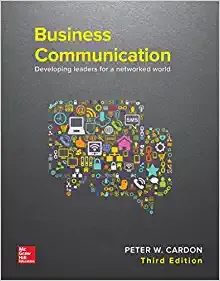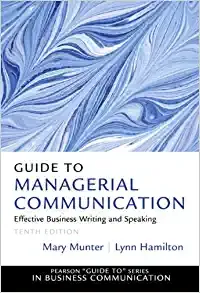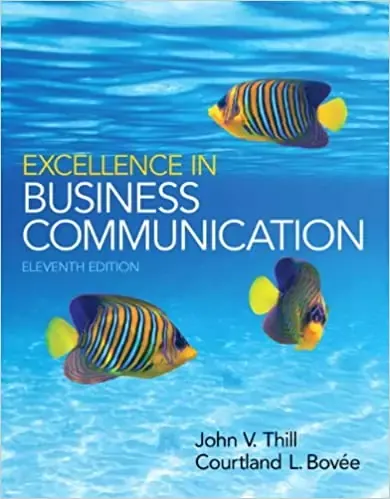20 Best Books on Business Communication to Read for Work in 2024
Have you ever received dissatisfaction, complaints, and misunderstandings in your workplace?
Looking around, most workplaces spend 50%-75% of their working time communicating in writing, via email, and phone calls.
But many times, when you complain that your superiors, subordinates, or colleagues are not doing well, have you ever thought that the crux of the problem is often not your work level, but your communication problem with them.
Research shows that 50% of work mistakes are often caused by poor communication.
Why do we often feel in the workplace that there are situations where we don't know what to say? Can't you say something for sure? Some suggestions and feedback not accepted? In fact, communication is never easy.
Because of this, communication has become a key component of workplace competitiveness, so how can you improve your workplace communication skills?
Why does communication play a role in reaching consensus, resolving differences, improving understanding, increasing mutual trust, creating advantages, etc.?
What communication model allows you to continuously unleash and accentuate your leadership style in the workplace?
Today, we will share with you the 20 best business communication books in the workplace to help you improve your workplace communication skills.
1. Simply Said

Simply Said: Communicating Better at Work and Beyond by Jay Sullivan
A great book on workplace communication.
Many of the examples and skills listed in the book can be practically used in the workplace. The earlier you get in touch with the workplace, the more you can stand out.
The book is divided into 4 parts:
1. Communication content:
- From the interests of the audience: why do they care?
- Make it clear to the audience as soon as possible what you want them to know: what is the so-what?
- Introduce problems and phenomena, and go straight to the topic, the simpler the sentence, the better, and the tone is positive.
2. Oral expression:
- Pay attention to body language: eyesight, tone of voice, expression, and demeanor. Avoid misleading body language, such as arms folded.
- Listen attentively: use the right way to ask questions and give the other person enough attention
- Lectures and PPT presentations: link with the audience, refer to the RIDE structure (Read the heading, Identify the type of graphs, Define the main points, Explain why and so what)
3. Written expression:
- From the reader's point of view, avoid misunderstandings and use short sentences as much as possible. The shorter the paragraph, the easier it is for people to read.
- The active dynamic is easy to incite emotions (applicable to advertisements), and the passive dynamic is more dignified (applicable to the law).
4. Interactive communication:
- Explain the work to the subordinates: explain the background and importance, clarify the tasks and expectations, and mobilize motivation (how will it benefit them to complete the work?)
- Host brainstorming: avoid negative tone, encourage participation, control time, categorize solutions, summarize, and track.
- Express the vision and plan: focus on motivating and rallying others, show vulnerability appropriately, and be more genuine and honest with appreciation.
There are also some details that I haven't noticed that need to be improved,
such as:
Avoid using '/' and '...' to create ambiguity.
If the content in parentheses is too long, try to put it at the end of the sentence to improve the readability and coherence of the sentence.
Recommendations and recommendations, try to revolve around three things people generally care about: time, feelings, and money.
Of course, some of the scenes in the book are not applicable to all cultures and will be more helpful to friends who work in foreign companies and in Europe and America. But the core essentials of improving communication are the same:
The focus of communication is not on you, but on others: how to make others understand you and how you understand others.
2. How to Talk to Anyone
How to Talk to Anyone: 92 Little Tricks for Big Success in Relationships by Leil Lowndes
I've read many self-improve books and this book is the most impressive one. Basically, it tells people what they've already known for decades.
Establishing a healthy relationship is more than putting on a smile, and giving compliments. It may work in kindergarten, but not in the adult world.
I don't think people still appreciate artificial relationships in the 21st century. So these little tricks seem fake to me. They are not authentic and not helpful at all.
I understand the author, Leil Lowndes may intend to salute Dale Carnegie's "How to Win Friends & Influence People", which was published in 1936. The principles and tricks thereof don't apply to modern life anymore.
Keep in mind, that the secret of success is Sincerity. It makes the very least person be of more value than the most talented hypocrite.
3. Crucial Conversations
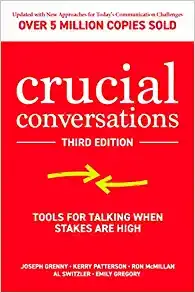
Crucial Conversations: Tools for Talking When Stakes Are High by Joseph Grenny
This book is definitely not the kind that can be simply read. Because there are too many dry goods in the book, the successful relationship between chapters is not so obvious, and this book will improve your experience and your understanding of the book.
Practice will generate constant motivation and inspiration. Therefore, you must read it repeatedly and think more in combination with your own life. Compare) to improve the solution to this problem.
Doing this can greatly enhance career development, improve organizational status, expand interpersonal relationships, and maintain healthy mental and physical health.
The author of this book is a scholar who has been engaged in research on organizational behavior for many years, which ensures the rigorous integrity of the content of the book, and the other three are consultant lecturers who have been engaged in speech consulting for many years, which ensures that the theme of this book is clear and structured.
Clear, popular language, practical and outstanding, and easy to remember. Please, believe me, temporarily forget the previous content about communicating and reading, accept the content of this book frankly, learn to guide yourself, and help yourself.
4. Everyone Communication, Few Connect

Everyone Communicates, Few Connect: What the Most Effective People Do Differently by John C. Maxwell
A very practical book! Although a lot of content sounds cliché, there is always an endless learning curve in communicating with people, and the cliché points are also truths. Several personal gains:
- When communicating with people, think about how you can help them and add value to them;
- The focus of communication with people is on the other party rather than on yourself;
- Use concise and easy-to-understand Ways of expression;
- Communication should not stop with everyone feeling better about themselves, but to start taking action immediately to make changes;
- The important premise of communicating well with others is to communicate well with yourself, that is, there must be enough and correct self-understanding and understanding;
- Don’t be afraid to show your weaknesses and be sincere to others;
- Your behavior should be consistent with the point expressed when communicating with others, which in turn means that the point of expression needs to be your sincere belief.
Finally, these communication skills can be cultivated through hard work, so let's work together!!
5. How to Win Friends and Influence People

How to Win Friends & Influence People by Dale Carnegie
Regarding the book review of this book, the more exciting and stimulating thinking is the review of this book by Goodreads abroad.
following are my thoughts, most of which are inspired by the comments on Goodreads:
It is true that this book reveals some human nature and the most basic ways to deal with others, but it has been practiced for a long time, and I have not seriously thought about it. It is easy to turn a method into an end, with dire long-term consequences.
For example, Goodreads reader Caroline said that she listened to the book's advice, became a good listener in her personal life, was nice to many people, and after a year had gathered around her a bunch of "good people". friends,” many of whom are self-centered friends. Based on the advice in the book, she tries to find the bright spots in these friends and then praises them sincerely.
The relationship is good, but these friends have not changed in essence, they are still a group of mediocre people, and there is no real "good teacher and friend" gathered around her.
On the contrary, among a group of mediocre people, in order to "win" their friendship, she constantly "manipulates" her own thinking, seeks and sincerely praises their bright spots, and slowly ignores their mediocre nature. At the same time, she slowly loses herself, because this group of friends is not what she really wants.
After using this method for a year, she has become accustomed to this kind of thinking. When she realized this, she was trying to forget the book and find herself.
Therefore, she believes that this book is more suitable for those who have a clear understanding of the distinction between friends. For mentors and friends, use a sincere attitude to win and maintain relationships with them. For some friends who are judged to be unacquainted, just face them with a sincere attitude, not to please them.
Dimitris's reply is even more thought-provoking: people who have figured it out, there is no need to read this book, because they have a deep understanding of pursuit, all methods and sincere attitudes are natural, and there is no need to pay attention to techniques.
His suggestion is to go back and think clearly about what the beautiful world you want is like, and what is the ideal state for others.
All answers must be thought through rationally. After you really figure it out, you can answer yourself: What is the motivation for interacting with others? Why *love* someone else?
If there is a positive evaluation of this book, it is that this book can provide a model of intercourse with people, expand their horizons, and make readers aware of it emotionally and intellectually There are such interaction models and methods, but is this what I really want?
This book is not a substitute for thinking.
6. Just Listen

Just Listen: Discover the Secret to Getting Through to Absolutely Anyone by Mark Goulston
When we were talking, we were actually asking, consciously or not, did you really hear me, did you really see me, and did you really care what I said. The point is that 'I'.
Everyone wants to be understood and valued by others, but next time you have a conversation with someone, why not let yourself see and listen to the other person first, and let him know that what you say, I care. "Just listening, it's the secret to communicating with everyone.
How long has it been since you listened to your life? How many times have you meditated on a negotiation while worrying about outcomes and deadlines? Have you ever thought about it because you didn't?
If you listen, you will fail in life; if you don’t listen, happiness will be far away. Happiness is actually very simple. As long as you listen, you can be happy. As long as you listen, you can succeed.
Read it out, and let the reader listen. I think this is actually "Just Listen" is actually a kind of mind-reading. And the key is not what you say, but you hear what other people are thinking.
My thoughts:
first, If you want to catch fish, you must think from the perspective of the fish. If you want to communicate, you must become the other party, build a bridge between the two parties, and take a look at the other party's heart. You must know how to control yourself, before throwing it away. Because at this moment, you are the other party.
Second, when you start to take the initiative to understand the other party, don't always show that you are smarter than others, you must make the other party feel valuable, instead of being played by you. Don't be arrogant, modesty is king. In fact, you are always an apprentice. The more you know, the more you will find out, the more you don't know.
Third, let the other party be the protagonist. , It is easy to be disgusting, sometimes tell yourself, to compromise a little, you have to let the other party get what he wants, just like taking a step back, the sky is wide open.
Fourth, although the conversation is to persuade the other party to believe your own words, you don't want to begin to speak your own intentions, this is a gradual process, you have to let the other party know that you understand him.
Also, don't argue with others, you will never win, and even if you win, you will lose, if you must Speak clearly, and the result is likely to be that you will no longer be able to communicate freely with each other.
Fifth, the attitude of communication, adheres to a hedgehog principle - keep an appropriate distance, do not talk about relationships or pretend to be familiar, communication is a slow process, don't be pretentious, be natural, treat each other sincerely, and really listen to each other.
Listening attentively is more important than imagining words. You are reading the other person's thoughts, inferring their next move, and responding accordingly. It's like playing chess but with more words. All in all, you need to create a communication environment where the other person feels that you are listening with interest.
Listening changes the world, and every listening is a perfect performance. You have to have confident dance steps, keep up with the beat of the other party, and dance a win-win dance with the other party.
Starting today, just like a conch, just listen and hear the inner voice of the other person. So where is your listening?
7. Never Split the Difference

Never Split the Difference: Negotiating As If Your Life Depended On It by Chris Voss
On a business trip, after reading this book on and off, I couldn’t help but want to hide my secrets and dare not share such a good negotiation method.
First Sword: Repeat the opponent's words. By repeating the last 2 or 3 words, you can unconsciously build a relationship of mutual trust, resulting in a lot of information.
Second Sword: The voice of a late-night radio host. Speak in a slow, falling tone to create a safe conversational atmosphere.
The third sword: marks the other party's emotions. Using empathy and expressing the other person's emotions in words can quickly close the distance.
Fourth Sword: Pulling the stab. Speak out the accusations that may be made against you first, and say that you are not human, so as to release the resentment and stinging pain in the other party's heart, and the situation will be a new one!
Fifth Sword: Let the other party say no. Saying "no" gives him a sense of control, makes him feel like he's in charge of the conversation, and makes the discussion more lively.
Sixth Sword: Guide the other party to say: You are right. Summarize the other person's situation in your own words, showing your great concern and understanding for him. When he says "You're right", you're on your way.
Seventh Sword: Use "what should I do" to create the illusion of the opponent's control, and actually lead him to start bidding with himself.
The eighth sword: Talk about the price, be precise to the single digit. The calculation of $1 can show that you have calculated to the extreme and made the greatest concession.
Ninth Sword: The "7, 38, 55" principle finds liars. Always remember that words can only account for 7% of the information, intonation 38%, body and expression 55%.
So, try to interview! Negotiations are encountered everywhere in life, and even coaxing children to sleep is a difficult process, and the above methods seem to be able to resolve all differences, hurry up and learn!
8. Essentials of Business Communication

Essentials of Business Communication by Mary Ellen Guffey
This revised Asian adaptation of Guffey's leading textbook retains the winning text/workbook format of the original book.
It reinforces basic communication and writing skills for effectively communicating one's messages in various business situations and for writing a variety of winning memos, letters, reports, and résumés.
There is also comprehensive coverage of contemporary business communication issues, including oral communication, electronic forms of communication, diversity, and ethics.
Four integrative cases, based on real companies and situations in Asia, help students apply the knowledge and skills they have learned from the book to resolve real business issues.
Ensure you are job-ready with the number one choice -- Guffey/Lowey's ESSENTIALS OF BUSINESS COMMUNICATION.
In a time when writing and communication skills rank high on recruiter's wish lists, this proven text helps you develop job readiness for the 21st century.
ESSENTIALS highlights best practices and strategies backed by leading-edge research to strengthen your professionalism, expert writing techniques, workplace digital savvy, and resume-building skills.
Learn how writing is central to business success, regardless of the communication channel. ESSENTIALS discusses best practices for social media and mobile technology while refining your communication skills.
Work with grammar exercises, documents for editing, and other practice tools in this four-in-one package with an authoritative text, practical workbook, grammar handbook, and author-generated digital resources in MindTap.
9. Business Communication
Business Communication: Developing Leaders for a Networked World by Peter Cardon
The Business Communication field is at a crossroads as communication technologies are reshaping how people communicate in the workplace.
Business Communication: Developing Leaders for a Networked World, by Peter Cardon, puts students at the center of business communication through the author's unique focus on credibility woven throughout the textbook chapters, a forward-looking vision built on traditional concepts, and a practitioner and case-based approach.
Students are more likely to read and reflect on the text and are better positioned to understand the essentials of efficient and effective business communication, thereby transforming them into leaders in a networked world.
10. Business Communication: In Person, In Print, Online
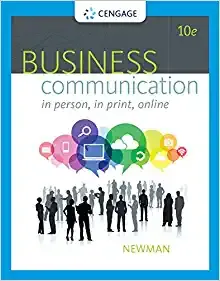
Business Communication: In Person, In Print, Online by Amy Newman
Discover a realistic approach to communication in today's organizations with BUSINESS COMMUNICATION: IN PERSON, IN PRINT, ONLINE.
You learn today's most important business communication concepts in detail and within the context of how communication happens in organizations today. Company examples and situations demonstrate how principles work in the real business world.
In addition to refining, the core is written and oral communication skills, you learn to navigate complex relationships and use current, sophisticated technologies.
You master the skills to create PowerPoint decks, manage your online reputation with LinkedIn and other tools, engage customers using social media, lead web meetings and conference calls, and more.
With self-reflection questions throughout the book, you develop a deeper understanding of yourself and how to communicate most effectively to reach your personal and professional goals.
11. 5 Voices

5 Voices: How to Communicate Effectively with Everyone You Lead by Jeremie Kubicek and Steve Cockram
5 Voices is the code for unlocking your capacity to have honest conversations and build deeper, more authentic relationships with your teams, your families, and your friends. In order to lead others effectively, we need a true understanding of ourselves, our natural tendencies, and patterns of behavior.
In learning what your leadership voice sounds like to others, you will discover what it feels like to be on the other side of your personality, as well as how to hear and value others' voices, namely the Pioneer, the Connector, the Creative, the Guardian, and the Nurturer.
Once you understand your own leadership voice, you'll discover how best to communicate with each of the other voices, which will transform your communication at every level of your relationship, both personal and professional.
By mastering the 5 Voices of leadership, you will increase your emotional intelligence, allowing you to gain a competitive advantage as a leader. You will also be equipped with a simple, easy-to-remember vocabulary that, when shared, has a track record for decreasing drama, misunderstanding, and miscommunication in all spheres of influence.
Are you focused on relationships, values, and people? Or are you oriented more toward tradition, money, and resources? Do you know how others hear your voice? Do you appreciate the contributions of others on your team?
This book will help you identify your natural leadership style, and give you a framework for leveraging your strengths.
- Find your foundational leadership voice
- Learn to hear and value the voices of others
- Know yourself before leading others
- Connect and communicate well with team, family, and friends
All five leadership voices come with their own particular set of strengths, and all have areas for growth. Understanding both sides of the equation is the key to taking your leadership to the next level and is the secret to increasing your ability to influence your team, family, and friends. 5 Voice is a simple key that unlocks complicated relational dynamics and improves the health and alignment of all your relationships.
12. Getting to Yes

Getting to Yes: Negotiating Agreement Without Giving In by Roger Fisher & William L. Ury
There are many scholars who have the ability to summarize rules from complex and specific matters or to be able to explain the essence in concise language.
This point does require a more in-depth study of relevant aspects. In this book, the author summarizes the common negotiation as positional negotiation and summarizes the recommended negotiation as principled negotiation. When reading, there is a feeling that makes people feel bright.
Although life is full of negotiation, I personally feel that my understanding of negotiation is not deep enough. Maybe most the negotiations in normal times will not cause serious consequences even if there are mistakes, or negotiation under pressure is relatively rare, so read At the time of this book,
although it can get some resonance, it is more of a recognition of its truth, and I am afraid that it needs a deeper understanding and further practice to apply it in practice.
But I feel a little more profound about two of the small cases:
1. Regarding the strategy:
The stamp auction in the sealed bid method stipulates that the bidder with the highest bid will buy the stamp at the next highest price.
2. Regarding fairness:
When two people share the cake, one person cuts the cake and the other person picks it first.
One of these two cases shows that the same form of different strategies can lead to very different results, and the other case shows that fairness does not have to be so complicated sometimes.
I believe this book is more resonant for those who need to face pressure negotiation often, but its principles are applicable to everyone, but the degree of understanding and the degree of practice will be different.
13. Guide to Managerial Communication
Guide to Managerial Communication by Mary Munter
It provides some general principles, which is not bad. Of course, it is better to have a little experience.
Directed primarily toward undergraduate or graduate business or communications students, this text also provides practical content to current and aspiring industry professionals.
A brief, professional, reader-friendly guide to improving managerial communication.
Guide to Managerial Communication is a clear, concise, practical text for cultivating effective written and oral communication in a managerial, business, government, or professional context.
14. Business Communication Essentials
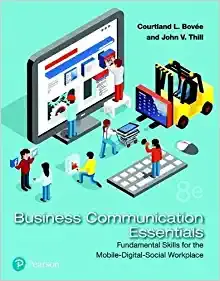
Business Communication Essentials: Fundamental Skills for the Mobile-Digital-Social Workplace by Courtland Bovee & John Thill
Only Bovee/Thill's texts thoroughly address the new media skills that employees are expected to have in today's business environment.
Business Communication Essentials presents these technologies in the context of proven communication strategies and essential business English skills.
For the past two decades, business communication has been in constant flux, with email, web content, social media, and mobile devices changing the rules of the game.
Business Communication Essentials: Fundamental Skills for the Mobile-Digital-Social Workplace equips you with the fundamental skills for a career in the modern, mobile workplace.
With a balance of basic business English, communication approaches, and the latest technology, the text covers writing, listening, and presentation strategies in a contemporary manner.
In the 8th Edition, Bovee and Thill provide numerous exercises, tools, and online resources to prepare you for the new reality of mobile communications, and emerging trends, for a bright start in the business.
Also available with MyLab Business Communication
By combining trusted authors’ content with digital tools and a flexible platform, MyLab personalizes the learning experience and improves results for each student.
15. Business Communication: Process And Product
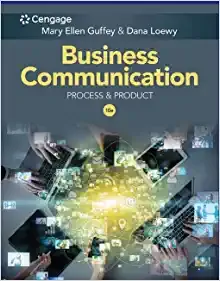
Business Communication: Process & Product by Mary Ellen Guffey & Dana Loewy
Interested in making your skills future-ready and recession-proof? Guffey/Loewy's best-selling BUSINESS COMMUNICATION: PROCESS AND PRODUCT, 10E, can help.
This leading text and MindTap digital resources guide you in developing the communication competencies most important for professional success in today's hyper-connected digital age. Refine the skills that employers value most, such as superior writing, speaking, presentation, critical thinking, and teamwork skills.
Two updated employment chapters offer tips for a labor market that is more competitive, mobile, and technology-driven than ever before. Based on interviews with successful practitioners and extensive research into the latest trends, technologies, and practices, this edition offers synthesized advice on building your personal brand, using LinkedIn effectively, and resume writing.
A signature 3-x-3 writing process, meaningful assignments, and digital practice tools further equip you with the communication skills to stand out in business today.
16. Business and Administrative Communication
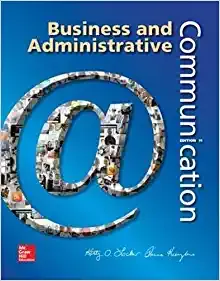
Business and Administrative Communication By Kitty Locker & Donna Kienzler
This Edition of Business and Administrative Communication by Donna Kienzler and Kitty Locker is a true leader in the business communications field.
Beyond covering the broad scope of topics in both oral and written business communication, Locker's text uses a student-friendly writing style and strong design elements to hold students' attention.
Real-world examples and real business applications underscore the relevance and importance of the material presented in the classroom and to the students? careers.
Kitty Locker's text also conveys the best possible advice to students through its research base; the author's reputation as a contributor to this field of study lends an even greater element of teachability and relevance to this market-leading title.
Does Locker continue to lead the pack with innovative technology offerings? InSites, Grademax, Manager's Hotseat for Business Communication? round out the learning experience with Business and Administrative Communication.
17. Excellence in Business Communication
SUPPORT LOCAL BOOKSTORES
Excellence in Business Communication by John V.Thill & Courtland L. Bovee
Students need to have excellent, effective, and practical business communication skills in order to succeed in today’s business world. Excellence in Business Communication delivers an abundance of the most realistic model documents and tools, helping students learn business communication skills by example.
Technology, globalization, and other forces have dramatically changed the practice of business communication in recent years. The Eleventh Edition offers in-depth coverage of new and emerging media skills and concepts, as well as chapter-opening vignettes, figures, and communication cases that expose students to professional use of social media and other new technologies.
MyBCommLab for Excellence in Business Communication is a total learning package.
MyBCommLab is the online study tool that helps you transform business communication students into polished professionals, ready to tackle the rigors of today’s business landscape.
It helps students better prepare for class, quizzes, and exams–resulting in better performance in the course–and provides educators a dynamic set of tools for gauging individual and class progress.
This program will provide a better teaching and learning experience—for you and your students. Here’s how:
Personalize Learning with MyBCommLab: Inspire the exchange of new ideas and foster intriguing discussions with the abundant resources found in MyBCommLab.
Help Students Apply Knowledge from the Text to the Real World: Cases give students the opportunity to solve real-world communication challenges.
Promote Active Learning and Stimulate Critical Thinking: Examples, exercises, and activities help students practice vital skills and put knowledge to immediate use.
Offer the Latest Information on Today’s Hottest Topics and Trends: In-depth coverage of new and emerging media skills and concepts, as well as chapter-opening vignettes, figures, and communication cases that expose students to professional use of social media and other new technologies.
18. Design for How People Learn

Design for How People Learn by Julie Dirksen
Some of the concepts, theories, and methods mentioned in this book are nothing new. For example, the classification of learning objectives of Gagne and Bloom are all talked about by seniors, but more attention is paid to the learning experience from the perspective of learners, and it is easy for everyone to understand by means of diagrams.
1. How to get the attention of students?
Comparing the learner to an elephant, how to seduce the elephant is as follows: tell stories to the elephants, let the elephants tell stories, show the elephants new toys, use the herd mentality, use the elephants' habits, etc. Get your learners' attention from the many things that catch their eyes.
2. How to build a learning experience?
The difficulty is equivalent to riding a bicycle to climb a hill. It feels like a "flow", there are slow and urgent, which not only makes them feel challenged but also enjoy the fun of success, balancing "ability" and "challenge". You can't keep them going uphill or downhill, it'll be tiring and boring, or some teachers don't care what the students like, anyway, I'll say mine...!
3. The time interval between classes is about 20 minutes of human attention, and you can take a break;
4. The feedback time and interval are to see timely feedback and give more motivation to study, just like playing a game. Very excited.
5. The learning environment design focuses on the environment in which learners accept knowledge so that learners can learn in an environment that is easy to accept knowledge. I was wondering if our university classrooms could be turned into casual workshops, and cafes, where learners feel relaxed and happy, which might be a better way. When we talk about instructional design, we can consider using this book!
It is also possible to consider reducing the number of students, giving more opportunities for college students and teachers to communicate.
19. Everyday Business Storytelling

Everyday Business Storytelling: Create, Simplify, and Adapt A Visual Narrative for Any Audience by Janine Kurnoff & Lee Lazarus
In Everyday Business Storytelling: Create, Simplify, and Adapt A Visual Narrative for Any Audience, visual communication and storytelling experts Janine Kurnoff and Lee Lazarus leverage decades of experience helping executives at the world's top brands—including Facebook, Nestle, Accenture, and Marriot—bring clarity and meaning to their business communications.
Whether you're building a presentation, crafting a high-stakes email, or need to influence decisions in your next meeting with an executive, Everyday Business Storytelling offers an insightful exploration of how to develop compelling business narratives.
You'll discover how to use a simple, repeatable framework to choreograph your ideas, data, and insights into an authentic, persuasive story. Within this business book, you'll also find clever data visualization and visual display techniques to help humanize your stories and build an emotional connection with your audience, leading to improved presentation skills and effective data storytelling.
Just a few of the things you'll learn from this business book include:
- The science behind why storytelling is the most effective way to trigger emotion in an audience and how to craft a business narrative that makes your ideas engaging
- The four signposts of storytelling and how to identify and weave in your BIG idea to capture the attention
- How to craft expert headlines that guide your audience and advance your story
Everyday Business Storytelling is an indispensable guide to making your communications stick in the minds of your audience and drive change. If you're a busy, talented businessperson responsible for executive presentations, one-pagers, emails, or virtual meetings, this communication book is for you.
20. The Big Book of Dashboards
The Big Book of Dashboards: Visualizing Your Data Using Real-World Business Scenarios by Steve Wexler, Jeffrey Shaffer & Andy Cotgreave
The starting point is good, but it is too simple.
There are several problems:
(1) It is not grounded/lean enough. There should be more simple and fast online cases. The cases in the book are too customized and the ROI is low;
(2) Given the case, there is no abstract experience/principle, such as when to use what pattern, interaction method, etc.
In general, the best practice of a dashboard is still in the industry, Google Analytics, Sensors, Mixpanel, and Metabase are all very good tools and learning samples.










